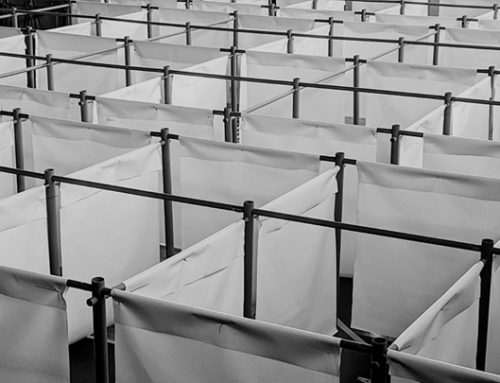While logging companies annually remove billions of trees for the paper industry, we use trees to build houses. The demand for paper products has increased by 400% over the past 40 years, and the global paper industry uses 35% of all trees harvested annually, or more than 4 billion trees. The typical American uses 680 pounds or more of paper products annually. The majority of this paper is disposed of in landfills, making up about one-third of all municipal waste.
What if there was a way to recycle the paper waste that is generated in our offices and homes to create a sustainable building material? What if we could recycle some of this material into home construction goods that reduced our need for lumber, as opposed to cutting down billions of trees to make 2x4s, sheets of plywood, and paper?

Papercrete, a combination of the words “paper” and “concrete,” is essentially a papier mâché drawing made with industrial strength on paper or cardboard, sand, and Portland cement or clay. Recycled paper fiber is used to create papercrete, an innovative building material that is stabilized with Portland cement or clay soil. It can be used as a building material and formed into blocks, sheets, or other moulded forms. (1)
How did papercrete originate?
Eric Patterson and Mike McCain independently “invented” papercrete in 1928 under the names “padobe” and “fibrous cement,” respectively. Both of them have made contributions to the discussion of possible uses and the most effective methods of production.
Since the 1980s, it has gained a newfound following as a building material, especially among do-it-yourselfers, thanks to the development of innovative online sharing platforms. (1)
What is the composition of an ideal papercrete mixture?
- Waste paper is often used and can be added dry or pre-soaked depending on the mixing equipment being used. Examples include cardboard, newspapers, magazines, books, and even junk mail.
- Aggregate: Depending on the level of strength required, either coarse or fine aggregate, usually sand, is used.
- Clay or cement serves as the mixture’s binder and gives it strength and rigidity.
- Water as a base medium, making up two-thirds of the overall composition. (2)

What are the core processes involved in papercrete mixture?
The material is relatively easy to mix, consisting of waste paper, cement, or clay, which binds the mixture together, and water, which makes up about two-thirds of the mixture.
Paper from newspaper offices, junk mail, old phone books, etc. is collected to make Papercrete. The paper is then processed into a fibrous pulp using a mixer. This pulp is next combined with Portland cement, and the mixture is then put into forms to dry in the sun. The process is comparable to that used to create adobe blocks. The outcome is a wall-buildable block material with an estimated R-value of 2-3 per inch that is 10 to 12 inches thick. Compared to a 12-inch cinderblock with an R-value of just 1.89, this is much better. Additionally, Papercrete weighs less than an equivalent adobe brick or concrete block, making it simpler to assemble and less expensive to ship.
After the components are properly blended, the slurry can be pumped into slip forms or added to molds, and the mixture can then be leveled and smoothed to form building blocks. For about 30 minutes, the blocks should stay in the mold so that the extra water can drain. The finished blocks should cure for three to four days before they can be used for construction. (2)

What are the key advantages and disadvantages of the papercrete?
The advantages are as follows:
- There are plenty and affordable raw materials available to make papercrete.
- Excellent heat and sound insulation qualities can be found in papercrete. It is significantly lighter than concrete in terms of weight. It has high compressive strength.
- Because of how easily it can be molded into blocks, sheets, or panels, the material is very malleable.
- Papercrete doesn’t burn easily, and when it does, it usually smolders for several hours. In contrast to, say, wood, papercrete fires have a tendency to spread more slowly and cause less damage as a result. Increases in cement and mineral content improve fire resistance. (3)
The disadvantages are as follows:
- Papercrete, a material made of paper, has a low moisture resistance. It may start to degrade if submerged in water for an extended period of time. It can certainly function as a wick to draw moisture from the soil all around the constructed structure.
- If the material is left warm and moist for too long, mold may begin to grow. It can easily expand and contract, which can result in buckling and cracks.
- Its tensile strength is subpar. Additional and more conventional support (in the form of wood or concrete) is frequently needed over doors and windows. (3)
What are the possibilities for papercrete in the future?
Papercrete could become a building material that is not only quick to make, flexible in application, and reasonably priced, but also eco-friendly, by experimenting with mixes to increase eco-efficiency.
Papercrete is not a load-bearing material. Because of this, it is not currently recognized by the International Council Code and is illegal to use to support a roof in the majority of American cities. The infill of homes is where papercrete is most frequently used.
A growing army of papercrete builders is continuing to advance the cause globally. There is a sizable potential market for papercrete construction in India, China, and Africa, where there is a particular need for construction that can be made quickly and inexpensively. (3)

References:



